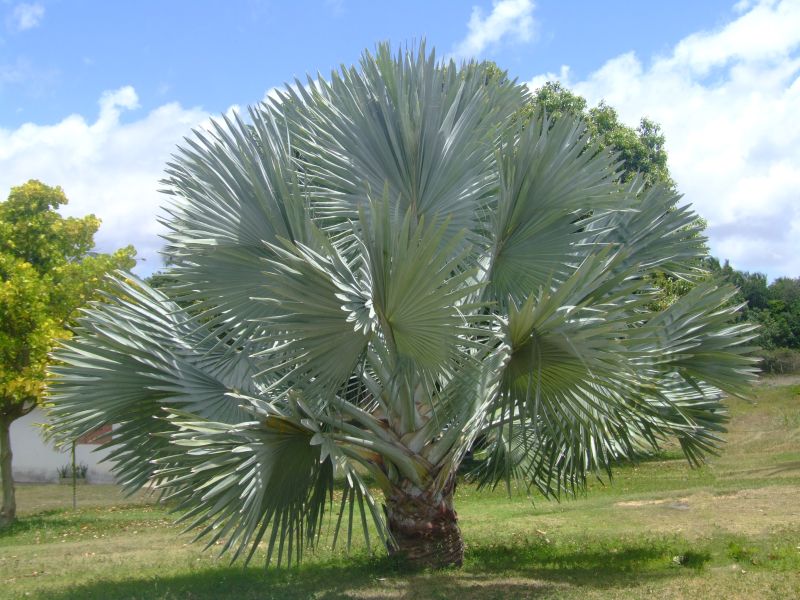
Bismarck Palm Facts
- Perhaps most notably, the remarkable Bismarck Palm evolved as native to a small, isolated part of the world. However, in the past few decades, the truly fascinating species has become quite popular as an ornamental. This, at least, helps to ensure the continued survival of this species, which also represents the only species within its genus.
- Bearing the cumbersome scientific name of Bismarckia nobilis, it drew its name from the German Chancellor of the same name. rather ironically, this makes it one of the few species named after a politician. Due to the recently formed popularity of the amazing plant with home gardeners and landscapers, it now appears in dozens of countries.
- Due to its newfound popularity throughout the world, the IUCN currently lists it as a Species of Least Concern. But, it does still remain vulnerable in the wild, in its native region. This occurs partly due to the simple fact of appearing such a limited area in the wild. But, it also faces the same threats as many species today, that of climate change.
Related Articles
Cretan Date Palm
Bismarck Palm Physical Description
First of all, the stunning Bismarck Palm develops a single trunk. This typically presents a color that ranges among specimens from gray to tan. Furthermore, it also displays multiple ringed indentations. These structures actually represent the remains of older leaf bases, left as the tree grew.
In addition, these same trunks also average an overall diameter measuring between 12 – 18 in (30 – 45 cm). Yet, these also tend to bulge slightly near the base. In the wild, individuals trees sometimes attain heights of as much as 82 ft (25 m). However, in cultivation, this truly fascinating tree rarely exceeds 39 ft (12 m) in height.
Nonetheless, the leaves of the Bismarck Palm easily qualify as its most memorable feature. These appendages attain an incredible size, often exceeding 10 ft (3 m) in width in mature specimens. Additionally, these same leaves divide themselves into 20 or more stiff, folded segments. Most amazingly of all, though, remains the fact that, while most trees present a silver-blue color, some display a dark green.
- Kingdom: Plantae
- Phylum: Angiosperms
- Class: Monocots
- Order: Arecales
- Family: Arcaceae
- Genus: Bismarckia
- Species: B. nobilis
Bismarck Palm Distribution, Habitat, and Ecology
The astounding Bismarck Palm evolved as native solely to the incredible island of Madagascar. But, even there, it only appears in a particular section of the island. This primarily consists of the central highlands. Yet, thinner concentrations of the magnificent palm species extend nearly to the northern and western coasts.
The tree also has decidedly pronounced preferences in regard to soil types and coexisting vegetation. As a result, it mainly develops in areas of savanna, and most commonly in soils with a high iron oxide content. But, in its native range, much of this needed type of habitat has been cleared by humans for agricultural use.
Fortunately, the Bismarck Palm also appears to quite adaptable to conditions, including harsh one’s. It thrives equally well in either hot and dry conditions, or areas of high humidity. Quite surprisingly, it also appears to be comparatively resistant to wildfire, as most such remain limited to brush fires. These do not damage its upper leaves. Due to this, it remains the only variety of palm on most of the island.
Species Sharing Its Range
Check out our other articles on 5 Fabulous European Mammals, Tree Kangaroo, Mount Everest, Bristlecone Pine, Harpy Eagle, Coral Pink Sand Dune Beetle, American Crocodile
